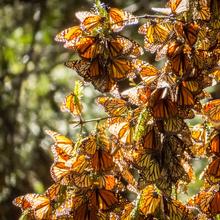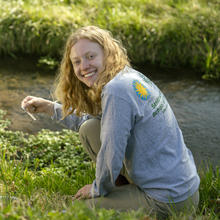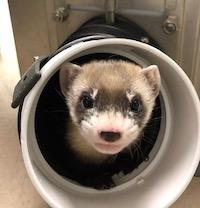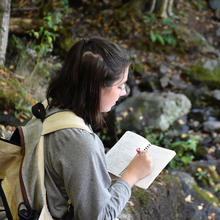- February 6, 2023
In late September, 18 undergraduates from the Smithsonian-Mason School of Conservation‘s (SMSC) Wildlife Ecology and Conservation program tagged monarch butterflies on their journey south to help researchers better understand their grand migration.
- June 14, 2022
Bees see the world in vibrant color…but that may be changing. Smithsonian-Mason team researches the impact with bee vision.
- April 28, 2022
Road salt has been touted as a lifesaver when it comes to combatting icy roads. Yet using this snow-melting mineral has a dark side once it enters waterways. Graduating senior Maggie Walker, through the Smithsonian-Mason School of Conservation (SMSC), is gathering data at local streams to influence change.
- December 15, 2021
Mason senior Eva Noroski spent a month assisting alumna and Elephant Trails keeper Ashley Fortner at the National Zoo, researching elephant sleep patterns.
- May 11, 2021
Faculty, family and friends remember the dynamic life of a pioneering scientist, explorer, educator and race car driver
- Thu, 04/15/2021 - 18:05
Black-footed ferrets were once thought to be extinct, until a small population was discovered in Wyoming in 1981. The species is still endangered, but scientists—including a George Mason University researcher and students at the Smithsonian-Mason School of Conservation (SMSC)—are coming to the rescue.
In December 2020, Willa, a black-footed ferret who died in 1988, was cloned using her cells that had been frozen. That clone, Elizabeth Ann, is now the first North American endangered species to be cloned in the United States. Senior Research Scientist Klaus-Peter Koepfli conducted critical research on her genetic cell line.
- Tue, 02/23/2021 - 16:19
- June 22, 2020
Outside their dorms, students at the Smithsonian-Mason School of Conservation (SMSC) have visual access to rare and endangered species. On any given day, you can find them doing field and laboratory work with influential conservation mentors. Midway through the spring semester, the school known for its hands-on conservation training, had to quickly transition their courses online due to COVID-19.
- December 2, 2019
Saving an endangered species is possible, but it takes a village. Conservationists, including three George Mason University alumni working at the Smithsonian and a current student, are part of the team at the Smithsonian Conservation Biology Institute (SCBI) and the Smithsonian-Mason School of Conservation (SMSC) working to ensure red pandas move off the endangered list.







